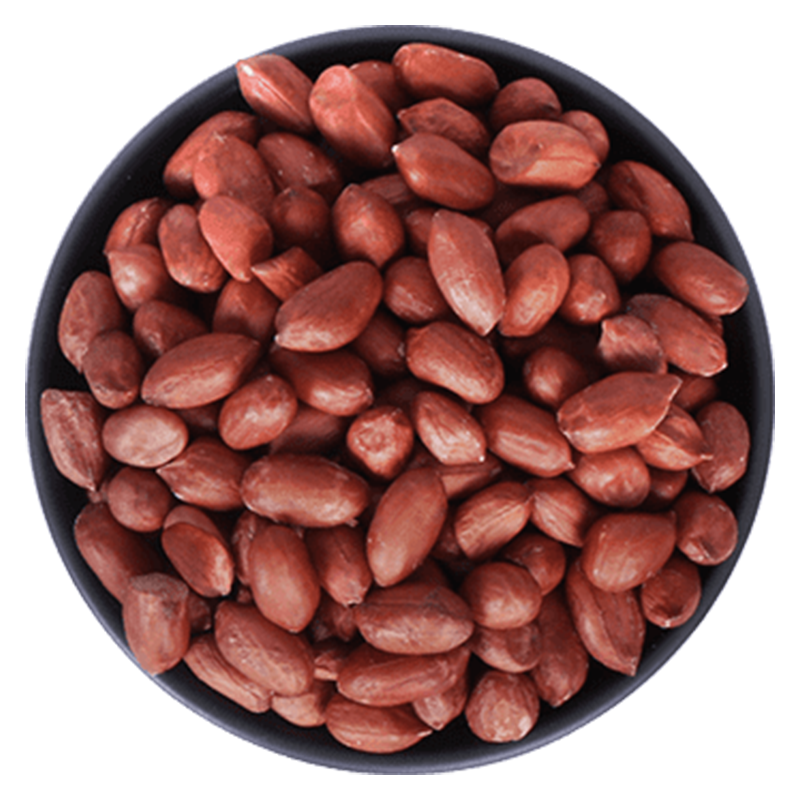
PEANUTS
|
PEANUT BUTTER
|
MILLETS PULCES & NUTS
|
VEGETABLES & FRUITS
|
SPICES
|
MEDICAL DISPOSABLE DEVICES

Bold Peanuts Specifications
| PROPERTIES | VALUES & LIMITS |
|---|---|
| Product | Bold Peanuts (Runner) |
| Counts | 40/50, 50/60, 60/70, 80/90 (Counts Per Ounce) |
| Moisture | 7% Max |
| Cleaning | Sortex Cleaned |
| Oil Content | 42% - 48% Max |
| Place of Origin | India |
| Foreign Material | 0.50% max OR 1.00% max Oil content |
| Aflatoxin | Aflatoxin negative 5 PPB (TLC method) |
| Shape | Long-Lengthy, Round |
| Aroma | Sweet, Creamy and Nutty |
| Color | Reddish brown skinned |
| Nutritional facts | 23.56% more copper, 4.49% more carbohydrates, 2.09x more zinc, 9.35% less saturated fatty acids, 14.58% more monounsaturated fatty acids, 28.57% more ash, 8.14% higher water content than Java per 100g |

TJ Peanut
TJ Peanuts Specification
| PROPERTIES | VALUES & LIMITS |
|---|---|
| Product | TJ Peanuts |
| Counts | 50/60, 60/70 & 80/90 (Counts Per Ounce) |
| Moisture | 7% Max |
| Cleaning | Sortex Cleaned |
| Oil Content | 48% - 52% Max |
| Place of Origin | India |
| Foreign Material | 0.50% max OR 1.00% max Oil content |
| Aflatoxin | Aflatoxin negative 5 PPB (TLC method) |
| Shape | Long-Lengthy, Round |
| Aroma | Sweet, Creamy and Nutty |
| Color | Round Pinkish White Skin |
| Nutritional facts | 3.81% more protein, 11.76% more dietary fibre, 7.83% more potassium, 1.27% more food energy (kJ), 19.1% more calcium, 1.53x more iron, 9.94% more magnesium, 2.11% more phosphorus than runner variety per 100g. |
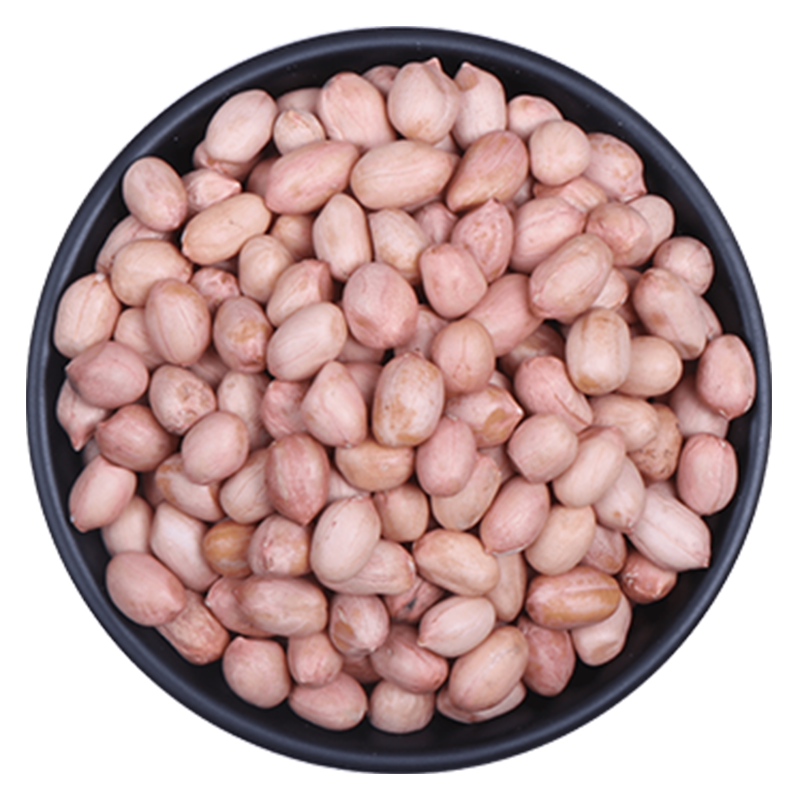
Java Peanut
Java Peanuts Specification
| PROPERTIES | VALUES & LIMITS |
|---|---|
| Product | Java Peanuts (Spanish) |
| Counts | 40-50, 50-60, 60-70, 70-80, 80-90,90-100,100-110,140-160 |
| Moisture | 7% Max |
| Cleaning | Sortex Cleaned |
| Oil Content | 48% - 52% Max |
| Place of Origin | India |
| Foreign Material | 0.50% max OR 1.00% max Oil content |
| Aflatoxin | Aflatoxin negative 5 PPB (TLC method) |
| Shape | Long-Lengthy, Round |
| Aroma | Sweet, Creamy and Nutty |
| Color | Round Pinkish White Skin |
| Nutritional facts | 3.81% more protein, 11.76% more dietary fibre, 7.83% more potassium, 1.27% more food energy (kJ), 19.1% more calcium, 1.53x more iron, 9.94% more magnesium, 2.11% more phosphorus than runner variety per 100g. |
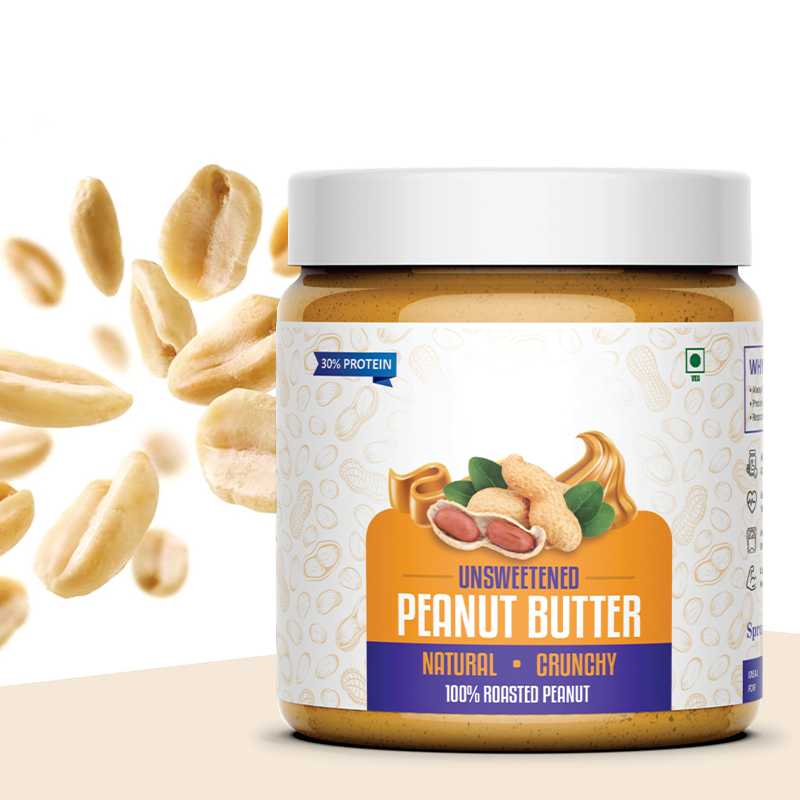
Natural Crunchy Peanut Butter
Unsweetened Natural Crunchy Peanut Butter
| Category | Description |
|---|---|
| Ingredients | 100% Roasted Peanuts |
| Nutritional Facts (Per 100g) | Protien: 30g, Fiber: 06g, Sat. Fat: 07g, Sugar: 00g |
| Weight | 200 gm, 500 gm, 1 Kg |
| Shelf Life | 12 Months |

Chocolate Crunchy Peanut Butter
Chocolate Crunchy Peanut Butter
| Category | Description |
|---|---|
| Ingredients | Roasted Peanut, Lodized Salt, Coco Powder, Choco Chips, Sugar, Emulsifer (E471), Milk Solids (S.M.P. & W.M.P.), Sesame Oil, Chocolate Flavor, Antioxidant 322(i) |
| Nutritional Facts (Per 100g) | Protein: 20g, Fiber: 07g, Sat. Fat: 07g, Sugar: 12g |
| Weight | 200 gm, 500 gm, 1 Kg |
| Nutrition Facts (Per Serve 32g) | Energy: 604kcal, Protein: 21g, Carbohydrate: 18g, Sugar: 14g, Heart Friendly: 7.6g, Healthy Fat: 49g, Source of Protein: 26g, Trans Fat: 0g, Cholesterol: Omg, Sodium: 72mg, Dietary Fibre: 8g, Total Fat: 15g, Saturated Fat: 8g, Polyunsaturated Fat: 0g |
| Benefits | Aids Weight Management, Energy Booster, Heart Friendly, Source of Protein |
| Shelf Life | 12 Months |
| Other Information | Oil Separation is a Natural Process. Stir Well Before Use. |

Mango Creamy Peanut Butter
Mango Creamy Peanut Butter
| Category | Description |
|---|---|
| Ingredients | Roasted Peanut, Milk Solids (S.M.P. & W.M.P.), Chia Seeds, Mango Flavour, Sesame Oil, Sugar, Emulsifier (E471), Antioxidant 322(i) |
| Nutritional Facts (Per 100g) | Protein: 24g, Fiber: 08g, Sat. Fat: 7.4g, Sugar: 14g |
| Weight | 200 gm, 500 gm, 1 Kg |
| Nutrition Facts (Per Serve 32g) | Energy: 607kcal, Protein: 24g, Carbohydrate: 21g, Sugar: 14g, Dietary Fibre: 8g, Total Fat: 47g, Saturated Fat: 7.4g, Polyunsaturated Fat: 14g, Monounsaturated Fat: 25.6g, Trans Fat: 0g, Cholesterol: 0mg, Sodium: 262mg |
| Benefits | Aids Weight Management, Energy Booster, Heart Friendly, Source of Protein |
| Shelf Life | 12 Months |
| Other Information | Oil Separation is a Natural Process. Stir Well Before Use. |

Orange Crunchy Peanut Butter
Orange Crunchy Peanut Butter
| Category | Description |
|---|---|
| Ingredients | Roasted Peanut (78%), Milk Solid (S.M.P & W.M.P), Sesame Oil, Orange Flavour, Emulsifier E471 (100% plant based), Sugar, Antioxidant 322 (1) |
| Nutritional Facts (Per 100g) | Protein: 22g, Fiber: 07g, Sat. Fat: 7.5g, Sugar: 8g |
| Weight | 200 gm, 500 gm, 1 Kg |
| Nutrition Facts (Per Serve 32g) | Energy: 188.48kcal, Protein: 7.04g, Carbohydrate: 6.08g, Sugar: 2.56g, Dietary Fibre: 2.24g, Total Fat: 15.04g, Saturated Fat: 2.40g, Polyunsaturated Fat: 4.48g, Monounsaturated Fat: 8.00g, Trans Fat: 0g, Cholesterol: 0mg, Sodium: 38.72mg |
| Benefits | High protein & fiber as per RDA, ICMR-NIN 2020 |
| Shelf Life | 12 Months |
| Other Information | Contains added Nature Identical Flavours (ORANGE), Contains Peanuts |
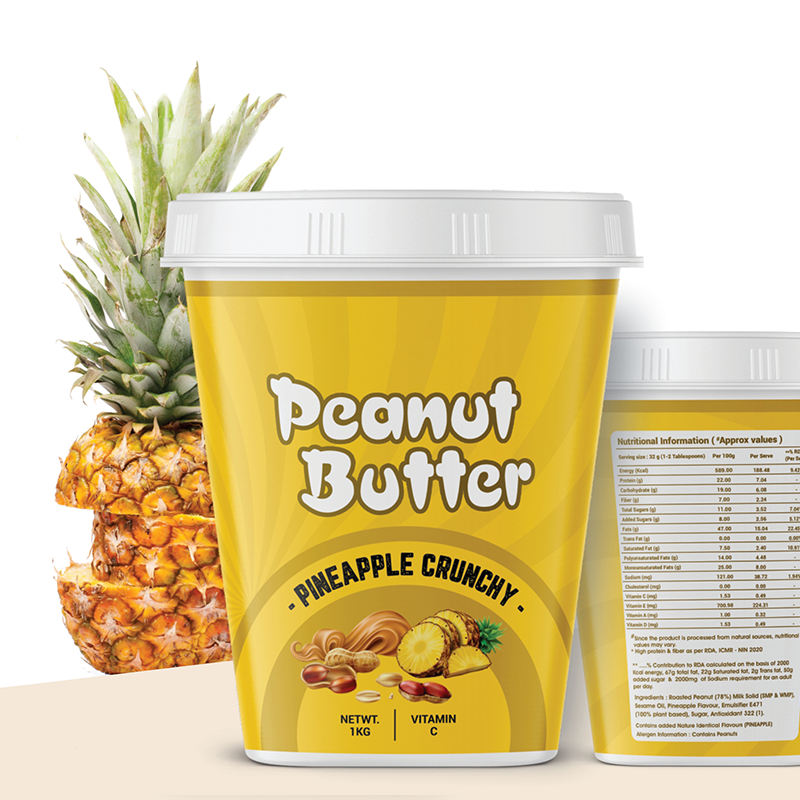
Pineapple Crunchy Peanut Butter
Pineapple Crunchy Peanut Butter
| Category | Description |
|---|---|
| Ingredients | Roasted Peanut (78%), Milk Solid (S.M.P & W.M.P), Sesame Oil, Pineapple Flavour, Emulsifier E471 (100% plant based), Sugar, Antioxidant 322 (1) |
| Nutritional Facts (Per 100g) | Protein: 22g, Fiber: 07g, Sat. Fat: 7.5g, Sugar: 8g |
| Weight | 200 gm, 500 gm, 1 Kg |
| Nutrition Facts (Per Serve 32g) | Energy: 188.48kcal, Protein: 7.04g, Carbohydrate: 6.08g, Sugar: 2.56g, Dietary Fibre: 2.24g, Total Fat: 15.04g, Saturated Fat: 2.40g, Polyunsaturated Fat: 4.48g, Monounsaturated Fat: 8.00g, Trans Fat: 0g, Cholesterol: 0mg, Sodium: 38.72mg |
| Benefits | High protein & fiber as per RDA, ICMR-NIN 2020 |
| Shelf Life | 12 Months |
| Other Information | Contains added Nature Identical Flavours (PINEAPPLE), Contains Peanuts |

Strawberry Creamy Peanut Butter
Strawberry Creamy Peanut Butter
| Category | Description |
|---|---|
| Ingredients | Roasted Peanut, Milk Solid (S.M.P & W.M.P), Chia Seeds, Strawberry Flavour, Sesame Oil, Sugar, Emulsifier E471 (100% plant based), Antioxidant 322 (1) |
| Nutritional Facts (Per 100g) | Protein: 22g, Fiber: 15g, Sat. Fat: 8g, Sugar: 6g |
| Weight | 200 gm, 500 gm, 1 Kg |
| Nutrition Facts (Per Serve 32g) | Energy: 603 Kcal, Protein: 22g, Carbohydrate: 29g, Sugar: 6g, Dietary Fibre: 15g, Total Fat: 44g, Saturated Fat: 8g, Polyunsaturated Fat: 20g, Monounsaturated Fat: 16g, Trans Fat: 0g, Cholesterol: 0mg, Sodium: 109mg |
| Benefits | Heart Friendly, Healthy Fat, Energy Booster, Source of Protein, AIDS Weight Management |
| Shelf Life | 12 Months |
| Other Information | Oil separation is natural process. Stir well before use. |

Cookie Creamy Peanut Butter
Cookie Creamy Peanut Butter
| Category | Description |
|---|---|
| Ingredients | Roasted Peanut, Milk Solids (S.M.P & W.M.P), Cookie Flavour, Sesame Oil, Sugar, Emulsifier (E471) |
| Nutritional Facts (Per 100g) | Protein: 21g, Fiber: 7.6g, Sat. Fat: 8g, Sugar: 14g |
| Weight | 200 gm, 500 gm, 1 Kg |
| Nutrition Facts (Per Serve 32g) | Energy: 604kcal, Protein: 21g, Carbohydrate: 18g, Sugar: 14g, Dietary Fibre: 7.6g, Total Fat: 49g, Saturated Fat: 8g, Polyunsaturated Fat: 159, Monounsaturated Fat: 26g, Trans Fat: 0g, Cholesterol: 72mg, Sodium: Og |
| Benefits | Heart Friendly, Healthy Fat, Energy Booster, Source of Protein, AIDS Weight Management |
| Shelf Life | 12 Months |
| Other Information | Oil separation is natural process. Stir well before use. |

Cinnamon
Here are some of the benefits of cinnamon:
- ⦁ Blood sugar control: Cinnamon may help improve insulin sensitivity and lower blood sugar levels. This is especially beneficial for people with type 2 diabetes.
- ⦁ Heart health: Cinnamon may help reduce heart disease risk factors, such as high blood pressure, bad cholesterol, and triglycerides.
- ⦁ Inflammation: Cinnamon has anti-inflammatory properties that may help reduce inflammation throughout the body.
- ⦁ Antioxidant activity: Cinnamon is a good source of antioxidants, which protect cells from damage caused by free radicals.
- ⦁ Other benefits: Cinnamon may also help fight infections, improve cognitive function, and reduce the risk of certain cancers.
Here are some ways to use cinnamon:
- ⦁ In baking and cooking: Cinnamon is a common ingredient in many baked goods, such as pies, cakes, and cookies. It can also be added to savory dishes, such as curries, stews, and chili.
- ⦁ As a tea: Cinnamon tea is a popular beverage that can be enjoyed hot or cold. It is made by steeping cinnamon sticks or ground cinnamon in hot water.
- ⦁ In supplements: Cinnamon is available in supplement form, such as capsules and powders. However, it is important to talk to your doctor before taking cinnamon supplements, as high doses can be harmful.

Cloves
Benefits of cloves:
- ⦁ High in antioxidants: Cloves are a good source of antioxidants, which can help protect your cells from damage
- ⦁ May help regulate blood sugar: Studies have shown that cloves may help to improve blood sugar control.
- ⦁ Anti-inflammatory properties: Cloves have anti-inflammatory properties that may help to reduce pain and swelling.
- ⦁ May improve oral health: Cloves have been shown to be effective in killing bacteria in the mouth, which can help to improve oral health.
Uses of cloves:
- ⦁ Culinary spice: Cloves are a popular spice used in many cuisines around the world. They are often used in savory dishes, such as curries, stews, and roasts, but they can also be used in sweet dishes, such as cakes and pies.
- ⦁ Traditional medicine: Cloves have been used in traditional medicine for centuries. They have been used to treat a variety of ailments, including toothaches, coughs, and colds.
- ⦁ Aromatherapy: Clove oil is a popular essential oil that is used in aromatherapy. It is said to have a number of benefits, including relieving stress and anxiety.
Here are some additional things to keep in mind about cloves:
- ⦁ Cloves can be strong, so it is important to use them in moderation.
- ⦁ Clove oil can irritate the skin, so it is important to dilute it with a carrier oil before using it topically.
- ⦁ Pregnant women and people with certain medical conditions should avoid using cloves or clove oil
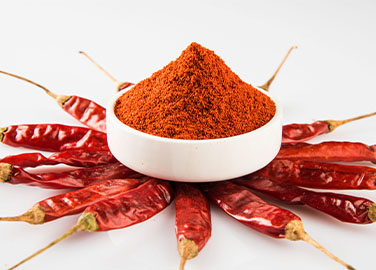
Red chilli
- ⦁ Red chilli powder packs a spicy punch thanks to capsaicin, which may boost metabolism and aid weight management.
- ⦁ It's rich in vitamin C, which strengthens your immune system to fight off illness.
- ⦁ Red chillies have anti-inflammatory properties that can help reduce pain and discomfort.
- ⦁ The potassium in red chilli powder helps regulate blood pressure by keeping blood vessels relaxed.
- ⦁ It may even improve digestion by stimulating the release of gastric juices that break down food.

Black Paper
Benefits:
- ⦁ Rich in antioxidants: Protects your cells from damage.
- ⦁ May aid digestion: Piperine, a compound in black pepper, can help your body absorb nutrients better.
- ⦁ Anti-inflammatory properties: May help reduce inflammation in the body.
Uses:
- ⦁ Culinary staple: Enhances flavor in many dishes.
- ⦁ Traditional medicine: Used for digestive issues and other ailments (talk to your doctor before using for medicinal purposes).
- ⦁ Improves nutrient absorption: Can help you get more out of other healthy foods.
Black pepper is a common spice with potential health benefits and a wide range of uses.
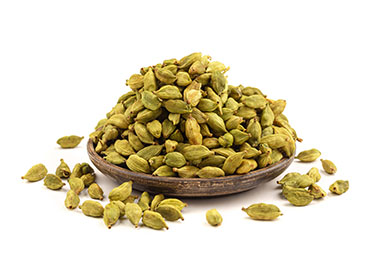
Cardomom
Benefits:
- ⦁ Improved digestion: Cardamom may help with digestion problems like heartburn, bloating, and constipation.
- ⦁ Fresher breath: Cardamom has properties that can fight bacteria in the mouth, contributing to better breath.
- ⦁ Anti-inflammatory effects: Cardamom may reduce inflammation in the body, potentially aiding conditions like arthritis.
Uses:
- ⦁ Culinary spice: Cardamom is a common ingredient in Indian and Middle Eastern cuisine, used in both sweet and savory dishes.
- ⦁ Natural remedy: Cardamom has been used in traditional medicine for digestive issues, respiratory problems, and oral health.
In short, cardamom is a versatile spice that can add flavor to your food and potentially improve your health.
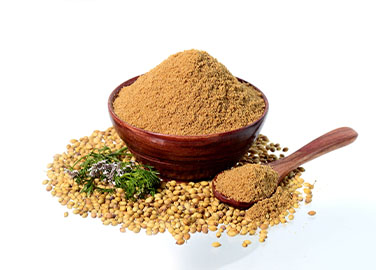
Dried Coriander Seeds
Benefits:
- ⦁ Rich in nutrients: Contains vitamins A, C, K, and minerals like iron and calcium, good for immunity, bones, and blood health.
- ⦁ Antioxidant power: Fights free radicals that can damage cells and potentially contribute to chronic diseases.
- ⦁ Potential health benefits: May help lower blood sugar, fight infections, improve digestion, and promote healthy skin.
Uses:
- ⦁ Culinary: Fresh leaves (cilantro) add a citrusy flavor to salsas, guacamole, curries, and many other dishes. Dried seeds (coriander) are used whole or ground in spice blends like curry powder and garam masala.
- ⦁ Traditional medicine: Used in some cultures for digestive issues, anxiety, and wound healing, although research is ongoing.
Important to note: While coriander is generally safe, some people have a genetic predisposition that makes cilantro taste like soap.

Cumin Seeds
Benefits:
- ⦁ Rich in antioxidants: Cumin contains compounds called flavonoids which act as antioxidants in your body. These antioxidants help neutralize free radicals, which can damage cells and contribute to diseases like cancer, heart disease, and high blood pressure.
- ⦁ Aids digestion: Cumin has been traditionally used to treat indigestion and diarrhea. Research suggests it may help promote digestion by stimulating the release of digestive enzymes.
- ⦁ May improve blood sugar control: Studies have shown that cumin may help improve blood sugar control. This could be beneficial for people with diabetes.
- ⦁ May reduce cholesterol: Cumin may also help reduce bad (LDL) cholesterol levels while increasing good (HDL) cholesterol levels.
Uses:
- ⦁ Culinary spice: Cumin is a popular spice used in many cuisines around the world, especially in dishes from the Mediterranean and Southwest Asia. It has a warm, earthy, and slightly nutty flavor that complements many foods.
- ⦁ Traditional medicine: Cumin has a long history of use in traditional medicine for a variety of ailments, including indigestion, diarrhea, headaches, and even kidney and bladder stones.
How to use cumin:
Cumin is most commonly used as a spice in cooking. You can find it whole or ground. Whole cumin seeds can be toasted to enhance their flavor before being added to dishes. Ground cumin is typically added to dishes during the cooking process. Cumin is a versatile spice that can be used in a variety of dishes, including:
- ⦁ Curries
- ⦁ Chili
- ⦁ Soups and stews
- ⦁ Roasted vegetables
- ⦁ Rice dishes
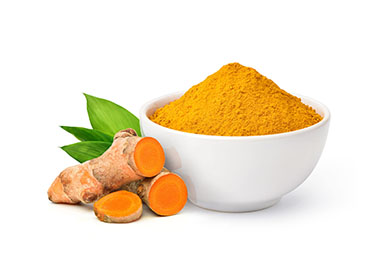
Turmeric
Turmeric: The Golden Spice
Turmeric, a bright yellow spice from the ginger family, offers a range of benefits thanks to curcumin, its main active ingredient. Here's a quick look:
- ⦁ Anti-inflammatory: Curcumin helps reduce inflammation, potentially easing symptoms of arthritis and other inflammatory conditions.
- ⦁ Antioxidant: It fights free radicals, protecting cells from damage and potentially lowering the risk of chronic diseases.
- ⦁ Digestive aid: Turmeric may improve digestion and soothe stomach upset.
Uses:
- ⦁ Culinary: Turmeric adds warmth, color, and earthy flavor to curries, rice dishes, vegetables, and more.
- ⦁ Supplements: Available in capsules or tablets, these can provide a concentrated dose of curcumin.
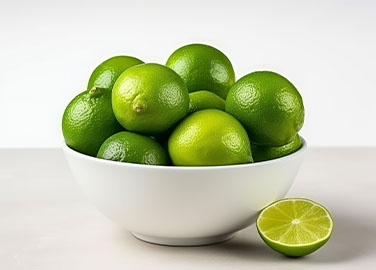
Lemon
Benefits:
- ⦁ Rich in vitamin C: Lemons are a well-known source of vitamin C, which helps boost the immune system and may help prevent heart disease and certain cancers.
- ⦁ May aid digestion: Lemons can stimulate the production of digestive juices, which can help with digestion and constipation.
- ⦁ Source of antioxidants: Lemons contain antioxidants that can help protect cells from damage and may reduce the risk of chronic diseases.
- ⦁ May help control weight: Some studies suggest that lemons may help promote feelings of fullness and boost metabolism, which can aid in weight management.
Uses:
- ⦁ Cooking and baking: Lemon juice and zest are commonly used to add flavor to dishes, desserts, and drinks.
- ⦁ Cleaning: Lemons can be used as a natural cleaning agent due to their acidic properties. They can be effective for disinfecting surfaces and cutting through grease.
- ⦁ Beauty: Lemons can be used in DIY beauty treatments for skin and hair care. The vitamin C content may help improve skin health and the citric acid can help remove dead skin cells.
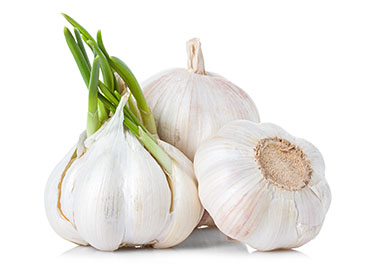
Garlic
Health Benefits
- ⦁ Supports heart health: Garlic powder may help lower blood pressure and cholesterol levels, reducing the risk of heart disease [1, 2].
- ⦁ Boosts immune system: Garlic's antimicrobial and antioxidant properties may help fight off illness and infections [1, 2].
- ⦁ Improves digestion: Garlic powder contains fiber which can aid digestion and promote gut health [3].
- ⦁ Anti-inflammatory properties: Garlic may help reduce inflammation in the body, potentially alleviating symptoms of arthritis and other inflammatory conditions [3].
Uses:
- ⦁ Cooking: Both garlic and garlic powder are popular flavor enhancers used in various cuisines around the world.
- ⦁ Natural remedy: Garlic has been used traditionally for centuries for its medicinal properties.
Fresh Garlic vs. Garlic Powder
While both offer similar benefits, there are some key differences:
- ⦁ Fresh garlic generally has a stronger flavor and aroma than garlic powder.
- ⦁ Garlic powder is more convenient to use as it's already prepped and has a longer shelf life.
- ⦁ Fresh garlic may contain slightly higher amounts of certain nutrients due to processing methods used for garlic powder [4].
Ultimately, the best choice depends on your preference and recipe.
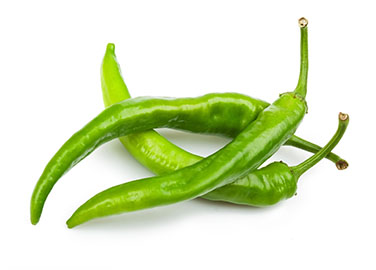
G4 green chilli
- ⦁ Rich in vitamins and minerals: Green chilies are a good source of vitamins A and C, which are important for maintaining healthy skin, vision, and a strong immune system. They also contain vitamin B6, folate, potassium, and manganese.
- ⦁ Boosts metabolism: The capsaicin in green chilies is what gives them their heat. It may also help boost your metabolism and burn more calories.
- ⦁ Pain relief: Capsaicin has properties that can help relieve pain. When applied topically, it can reduce pain signals sent to the brain.
- ⦁ Anti-inflammatory: Green chilies may also have anti-inflammatory properties. This may be beneficial for people with conditions like arthritis or psoriasis.
- ⦁ Aids digestion: Green chilies can stimulate the production of gastric juices, which can help with digestion.
So next time you're looking to add some heat to your dish, reach for the green chilies! They're not just flavorful, but also good for you.
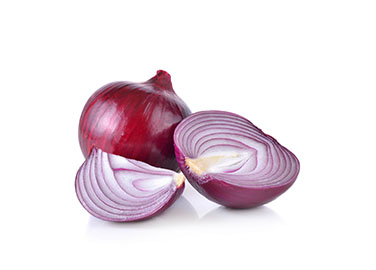
Onion
- ⦁ Rich in nutrients: Onions are a good source of vitamin C, B vitamins, potassium, and fiber [1].
- ⦁ Boosts immunity: Vitamin C in onions helps strengthen the immune system and fight off infections [1].
- ⦁ May improve heart health: Onions contain antioxidants and compounds that may help lower cholesterol and blood pressure, reducing the risk of heart disease [1, 3].
- ⦁ Promotes gut health: The prebiotic fiber in onions helps feed good bacteria in the gut, leading to better digestion and nutrient absorption [2].
- ⦁ Anti-inflammatory properties: Onions contain sulfur compounds that may help reduce inflammation in the body [2].
- ⦁ Potential anti-cancer effects: Studies suggest that onions may help lower the risk of certain cancers [3].
- ⦁ Uses: Onions are incredibly versatile and can be enjoyed in many ways. They can be eaten raw, cooked, grilled, or pickled. They add flavor to soups, stews, salads, and various other dishes.
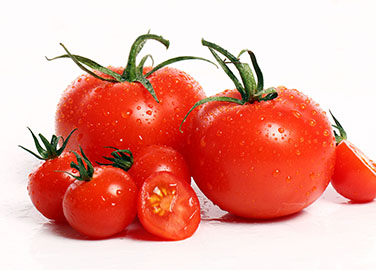
Tomatoes
- ⦁ Rich in nutrients: Tomatoes are a good source of vitamins A, C, and K, as well as potassium and folate. These nutrients are important for overall health and can help boost the immune system, regulate blood pressure, and promote healthy bones.
- ⦁ Contains lycopene: This antioxidant is what gives tomatoes their red color and has been linked to a number of health benefits, including a reduced risk of heart disease, cancer, and macular degeneration.
- ⦁ Versatile ingredient: Tomatoes can be enjoyed in many different ways, from eating them raw in salads or sandwiches to cooking them in sauces, soups, and stews. They can also be juiced or dried.
Overall, tomatoes are a healthy and delicious addition to any diet.

Drumstick / Moringa
Benefits:
- ⦁ Nutrient-Rich: Moringa leaves are a good source of vitamins, minerals, and antioxidants. They are particularly rich in vitamin A, C, and E, as well as potassium, calcium, and iron.
- ⦁ Antioxidant Powerhouse: Moringa is packed with antioxidants which can help protect cells from damage and may boost the immune system.
- ⦁ Potential Health Benefits: Early research suggests that moringa may help with blood sugar control, inflammation, and cholesterol levels. It may also be helpful for treating stomach ulcers and certain skin conditions.
Uses:
- ⦁ Food Source: Moringa leaves, seeds, and pods are all edible and can be consumed in various ways. The leaves can be dried and powdered, or fresh leaves can be added to soups and stews. The seeds can be roasted and eaten like nuts, and the pods can be cooked and eaten like green beans.
- ⦁ Water Purification: Moringa seeds have natural coagulating properties that can help clarify dirty water.
- ⦁ Nutritional Supplement: Moringa powder is available as a dietary supplement and is often touted for its health benefits.
Important to Note:
While moringa is generally safe for most people, it's always best to consult with a healthcare professional before adding it to your diet, especially if you are pregnant, breastfeeding, or taking medications.

Ginger
- ⦁ Nausea relief: Ginger is a well-known remedy for nausea, and it can be effective for relieving nausea caused by motion sickness, pregnancy, and chemotherapy.
- ⦁ Anti-inflammatory properties: Ginger has anti-inflammatory properties that may help reduce pain and inflammation caused by arthritis and other conditions.
- ⦁ Improved digestion: Ginger can help improve digestion by stimulating the production of saliva and bile.
- ⦁ Blood sugar control: Ginger may help improve blood sugar control in people with type 2 diabetes.
Ginger can be used in a variety of ways, including:
- ⦁ Fresh: Ginger can be grated, chopped, or sliced and added to stir-fries, soups, stews, and smoothies.
- ⦁ Dried: Dried ginger can be used in ground or whole form. It is often used in baking and in making curry powder.
- ⦁ Tea: Ginger tea can be made by steeping fresh or dried ginger in hot water.
- ⦁ Supplements: Ginger is also available in capsule and supplement form.
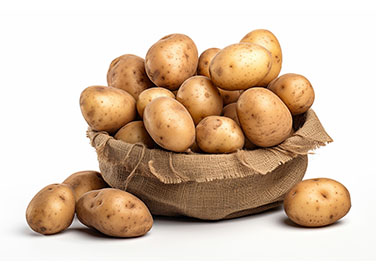
Potato
Benefits:
- ⦁ Rich in nutrients: Potatoes are a good source of vitamins C, B6, and potassium, which are essential for maintaining good health. They also contain fiber, antioxidants, and other important minerals.
- ⦁ Promotes heart health: The potassium and fiber content in potatoes can help regulate blood pressure and lower your risk of heart disease.
- ⦁ Boosts digestion: Potatoes contain a special type of fiber called resistant starch, which can promote gut health and digestion.
- ⦁ May aid weight management: Potatoes are filling and can help you feel satisfied for longer, potentially reducing calorie intake.
Uses:
- ⦁ Culinary versatility: Potatoes can be enjoyed in countless ways, from mashed and roasted to fried and baked. They can be the star of the dish or a delicious side.
- ⦁ Gluten-free: Naturally gluten-free, potatoes are a great option for people with celiac disease or gluten intolerance.
- ⦁ Industrial uses: Potato starch is used in a variety of products, from food thickeners to bioplastics.
Overall, potatoes are a healthy and affordable food that can be a valuable part of a balanced diet.
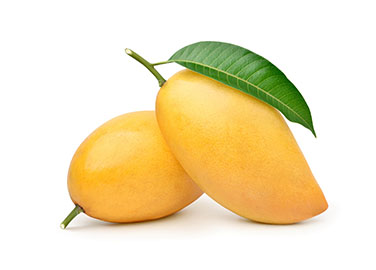
Mangoes
Benefits:
- ⦁ Rich in vitamins and minerals: Mangoes are a great source of vitamins A and C, which are important for boosting the immune system and overall health. They also contain fiber, potassium, and magnesium, which are essential for digestion, heart health, and muscle function.
- ⦁ Antioxidant powerhouse: Mangoes are loaded with antioxidants that help protect cells from damage and may reduce the risk of chronic diseases like cancer, heart disease, and diabetes.
- ⦁ Digestive aid: The enzymes in mangoes help break down complex carbohydrates and fibers, promoting healthy digestion and preventing constipation.
- ⦁ Good for eye health: Vitamin A in mangoes is beneficial for maintaining good vision and preventing night blindness.
Uses:
- ⦁ Eaten fresh: The most popular way to enjoy mangoes is simply to eat them fresh. You can slice them up, dice them, or even scoop out the flesh and enjoy it on its own.
- ⦁ In smoothies and juices: Mangoes add a delicious sweetness and tropical flavor to smoothies and juices.
- ⦁ In desserts: Mangoes can be used in a variety of desserts, such as pies, cakes, puddings, and ice cream.
- ⦁ In chutneys and salsas: Unripe mangoes can be used to make chutneys and salsas, which add a tangy and flavorful twist to dishes.
- ⦁ Pickled: Mangoes can also be pickled, which is a popular way to preserve them in some cultures.
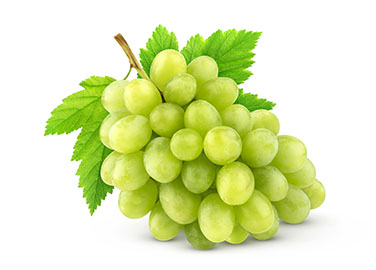
Grapes
Rich in nutrients: Grapes are a good source of vitamins, minerals, and fiber. They are particularly high in vitamin C, potassium, and fiber, all of which are important for maintaining good health.
- ⦁ Loaded with antioxidants: Grapes contain antioxidants like resveratrol, which may help protect against chronic diseases such as heart disease, cancer, and Alzheimer's disease.
- ⦁ Boosts heart health: The antioxidants and potassium in grapes may help lower blood pressure and improve blood flow, reducing the risk of heart disease.
- ⦁ May aid in diabetes management: Grapes have a relatively low glycemic index, meaning they are unlikely to cause a spike in blood sugar levels.
- ⦁ Potential benefits for eye and bone health: Grapes contain certain antioxidants that may help protect against macular degeneration and may also help improve bone health.
- ⦁ Uses: Grapes can be enjoyed fresh, frozen, or dried. They can also be used in a variety of recipes, including salads, yogurt parfaits, and trail mix. You can also make juice or wine from grapes.

Pomegranates
- ⦁ Rich in antioxidants: Pomegranates are one of the best sources of antioxidants, which protect your cells from damage and may reduce the risk of chronic diseases like heart disease and cancer [1].
- ⦁ Supports heart health: The antioxidants in pomegranates may help lower blood pressure, reduce bad cholesterol, and protect against plaque buildup in the arteries [2].
- ⦁ May boost brain function: Some studies suggest that pomegranate juice may improve memory and learning, and may help protect against Alzheimer's disease [3].
- ⦁ May aid digestion: Pomegranates are a good source of fiber, which is important for digestive health. Fiber helps to keep you regular and can also promote feelings of fullness [2].
- ⦁ May have anti-inflammatory properties: Pomegranates may help reduce inflammation throughout the body, which is linked to many chronic diseases [2].
Here are some ways you can enjoy pomegranates:
- ⦁ Eat the arils (seeds) fresh.
- ⦁ Add them to yogurt, oatmeal, or salads.
- ⦁ Juice them.
- ⦁ Use pomegranate molasses in glazes, marinades, or cocktails.

Surgeon Toe Separator silicone
Size: S, M, L
Anatomically designed, aligns big toe, relieves pain in Halux valgus, callus, corn or bunions. Separates toe fingers, takes care of toe fungal infections like Dhobi itch. Silicone has high cushioning coefficient, absorbs impact, has a long functional life. It is odorless, easy to clean and maintain. Comfortable, offers better tolerance and compliance. Can be used in post surgical care.
.jpg)
Sargen Skin Traction Set (PUF Liner)
Available as ready to use Kit. Convenient for emergencies. Cost effective, easy and quick to apply. High performance crepe bandage ensures firm grip, no slippage or loosening. Poly Urethane Foam liner offers frictional adhesion& non slipping interface. Strong matty liner ofers durabilty, large contact area and uniform traction.

Sargen Hot & Cold Pack
Versatile device to provide both hot and cold compresses with temperature range 4 to 60 degree C. Reusable with a long functional life. Can treat inflammation, muscle spasm, pain, injury and hyper-pyrexia. Non-t biodegradable gel remains soft and flexible on freezing. Plush fabric cover is durable, soft and gentle. The elastic belt makes it “hands free” & body conforming.

Saiden Metatarsal Cushion Male
Metatarsal Pad is designed to provide prevention of Metatarsal alleviates painful rubbing and friction on walking. Made from Silicone/TPE, has high cushioning coefficient, resists bacterial/fungal growth, has long fastial it is stick on washable. application and thin construction allows easy positioning inside the

Sargen Metatarsal Cushion Female
Metatarsal Pad is designed to provide prevention of Metatarsal pain, soreness corns, mortons, neuroma etc. Absorbs shock, and alleviates painful rubbing and friction on walking. Made from Silicone/TPE, h a s high cushioning coefficient, resists bacterial/fungal growth, has long application and thin construction allows easy positioning inside the

Sargen OT Round Head
Supports patient’s head during prolonged surgeries (air and gel cushioning) Protect skull, neck and ears in multiple positions by conforming to head’s contour
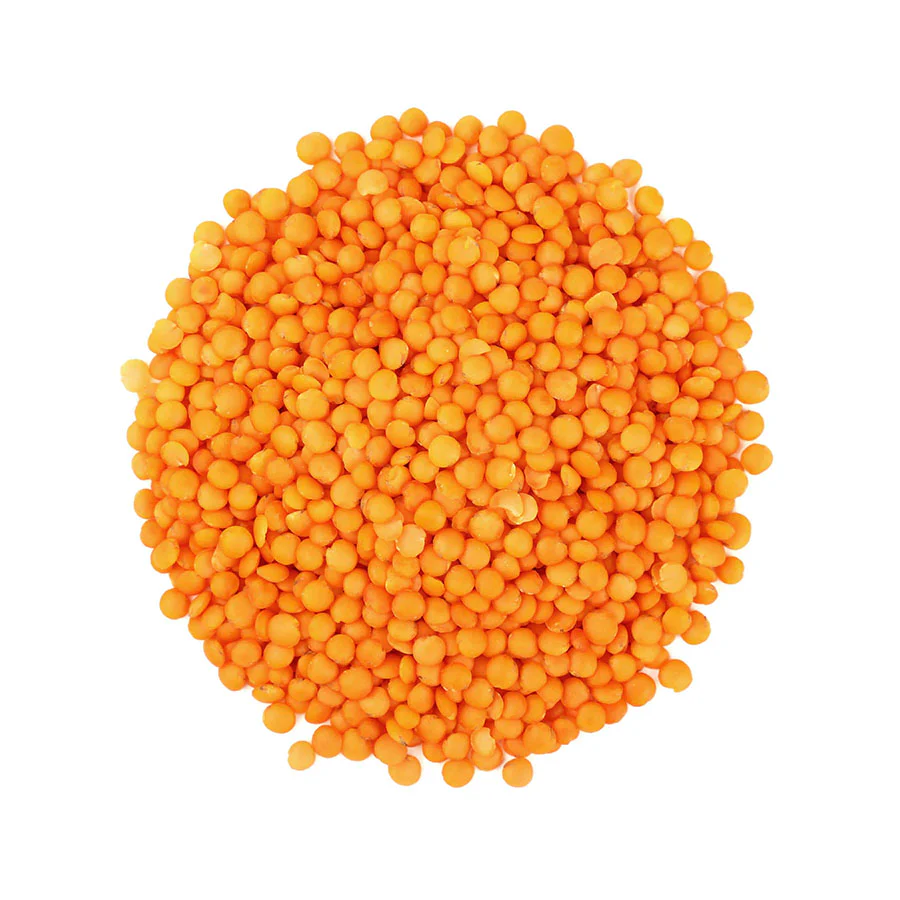
Red Lentils
Soups and stews: Because they break down and become soft and creamy when cooked, red lentils are a perfect ingredient for thickening soups and stews. They are a great source of plant-based protein and fiber, making them a hearty and nutritious addition to any meal.
Dals: Red lentils are a key ingredient in dal, a thick lentil soup or stew that is a staple food in many Indian cuisines. Dals are typically flavored with spices, herbs, and vegetables.
Curries: Red lentils can be used to make vegetarian or vegan curries. They add heartiness and protein to the dish, and they also help to thicken the sauce.
Dips and spreads: Red lentils can be cooked and mashed into a dip or spread. They can be flavored with a variety of ingredients, such as lemon juice, garlic, and herbs.
Salads: Cooked red lentils can be added to salads for extra protein and fiber. They can also be used to make vegetarian or vegan burgers.
Baked goods: Red lentils can be ground into flour and used in baking. They can add protein and fiber to breads, muffins, and other baked goods.
Here are some additional specifications of red lentils:
Size: Red lentils are one of the smallest types of lentils.
Cooking time: Red lentils cook quickly, typically in 15-20 minutes. This makes them a convenient ingredient for busy weeknight meals.
Nutrition: Red lentils are a good source of plant-based protein, fiber, iron, and folate.
Storage: Red lentils can be stored in a cool, dry place for up to a year.
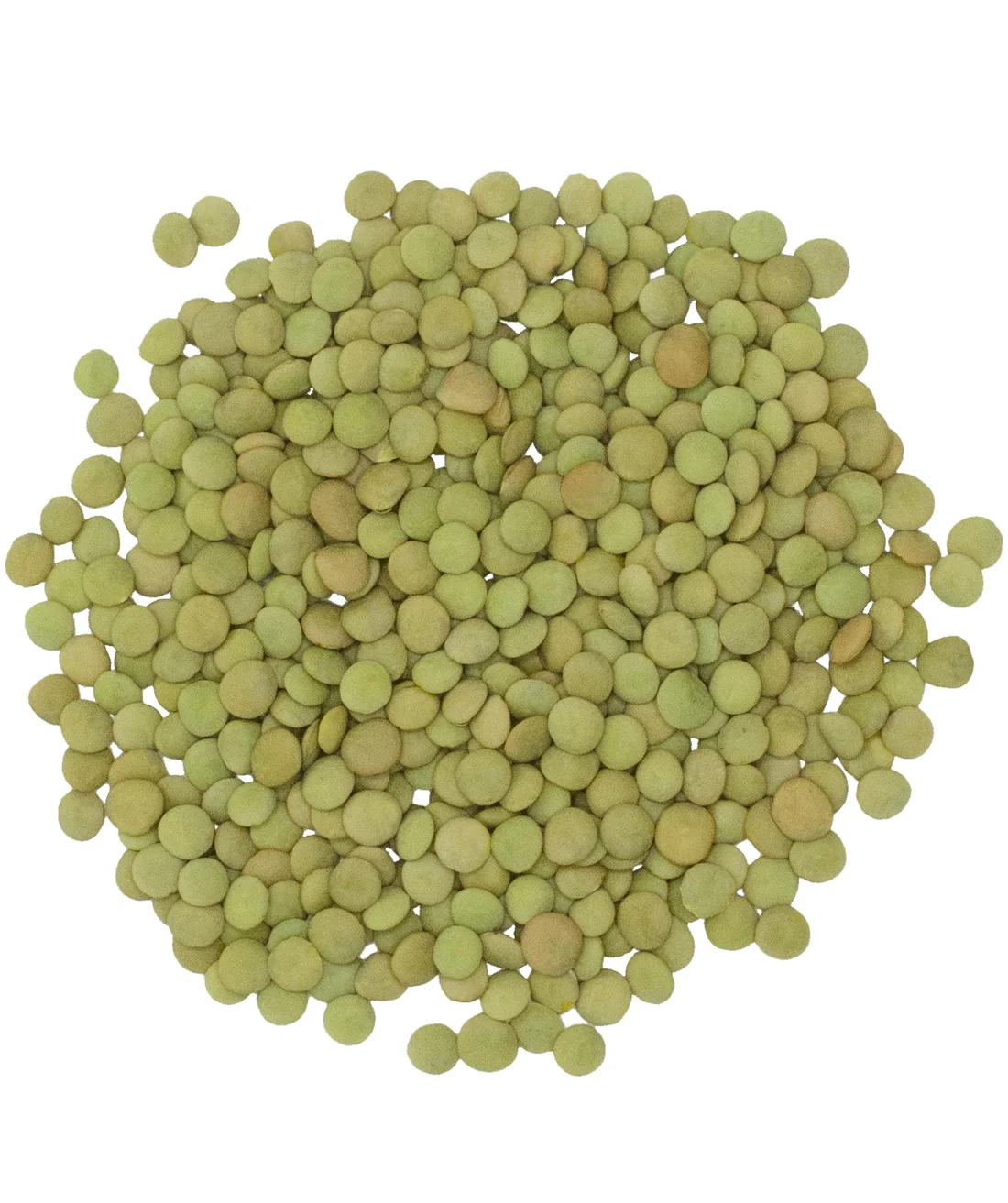
Green Lentils
Size: 2-3 mm in diameter
Color: Light green to olive green
Flavor: Earthy, nutty
Texture: Firm but tender when cooked
Green lentils are a healthy and affordable addition to any diet. They are a good source of nutrients, and they can be used in a variety of dishes. Here are some of the common uses of green lentils:
Soups and stews: Green lentils are a hearty and nutritious addition to soups and stews. They add protein, fiber, and flavor to these dishes.
Salads: Green lentils can be added to salads for a protein and fiber boost. They can also be used to make a vegetarian or vegan lentil salad.
Dips: Green lentils can be mashed and used to make dips, such as lentil hummus.
Stuffed vegetables: Green lentils can be used to stuff vegetables, such as bell peppers or tomatoes.
Shepherd's pie: Green lentils can be used as a vegetarian or vegan substitute for ground lamb in shepherd's pie.
Lentil burgers: Green lentils can be used to make lentil burgers, which are a healthy and delicious alternative to beef burgers.
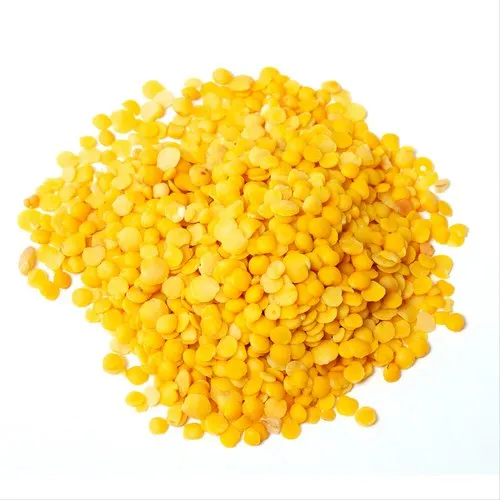
Yellow Lentils
Soups and stews: Yellow lentils are a perfect addition to soups and stews because they cook quickly and thicken the broth. They can be used in a variety of cuisines, from Indian dal to French lentil soup.
Salads: Yellow lentils can add protein and heartiness to salads. They can be cooked and cooled before being added to the salad, or they can be sprouted for a crunchy topping.
Dips and spreads: Yellow lentils can be mashed and used to make dips and spreads, such as hummus or lentil pate.
Stuffings: Yellow lentils can be used to stuff vegetables, such as peppers or eggplant.
Burgers and meatballs: Yellow lentils can be used as a binder and source of protein in vegetarian burgers and meatballs.
Yellow lentils are a good source of plant-based protein, fiber, and folate. They are also low in fat and calories. Here is the nutritional specification of yellow lentils per 100 grams:
- Calories: 358
- Fat: 1.2 g
- Saturated fat: 0.3 g
- Carbohydrates: 60 g
- Fiber: 8 g
- Sugar: 5 g
- Protein: 25 g
- Sodium: 12 mg
- Potassium: 361 mg
- Calcium: 31 mg
- Iron: 3.3 mg
- Magnesium: 80 mg
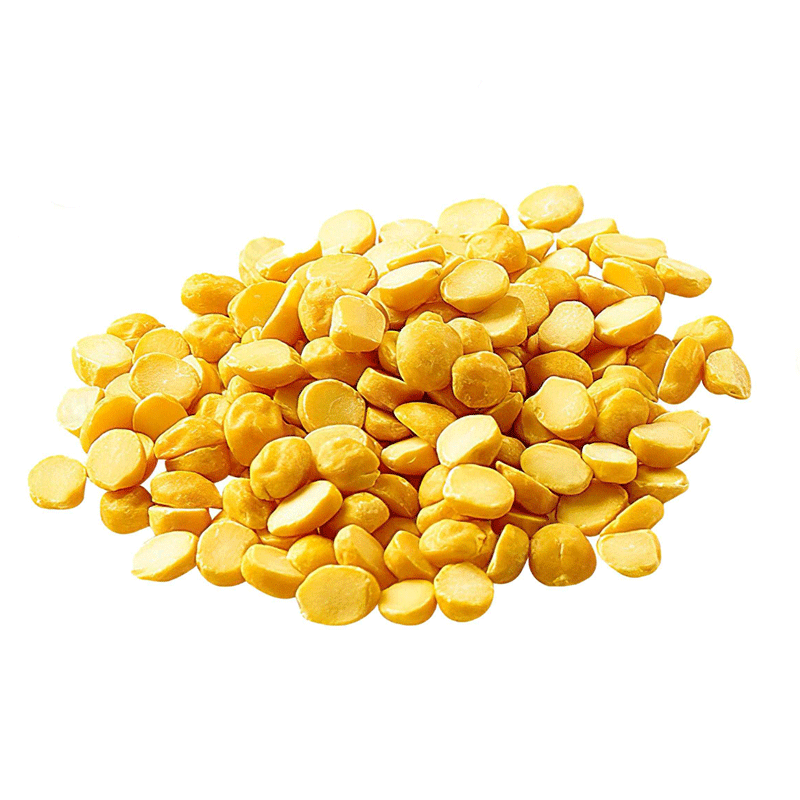
Split Bengal gram lentils
Dal: Split Bengal gram is most commonly used to make dal, a lentil-based soup or stew that is a staple in Indian cuisine. Dal can be made with a variety of spices and vegetables, and can be served as a main course or side dish.
Salads: Split Bengal gram can be added to salads for extra protein and fiber. They can be cooked or sprouted before adding them to your salad.
Stuffs and fillings: Split Bengal gram can be used to make stuffs and fillings for vegetables, such as peppers and tomatoes. They can also be used to make vegetarian burgers.
Snacks: Split Bengal gram can be roasted and seasoned to make a healthy and satisfying snack. They can also be ground into flour and used to make fritters or pakoras.
Thickener: Split Bengal gram can be used as a thickener in soups, stews, and curries.
Specifications of Split Bengal gram lentil:
Size: Split Bengal gram lentils are small and round, with a yellow color.
Flavor: They have a mild, nutty flavor.
Texture: Split Bengal gram lentils have a soft, slightly mushy texture when cooked.
Nutrition: Split Bengal gram lentils are a good source of protein, fiber, folate, and iron.
Here are some additional tips for using split Bengal gram lentils:
Rinse split Bengal gram lentils before using them to remove any dirt or debris.
Split Bengal gram lentils cook quickly, so they do not need to be soaked before cooking.
Split Bengal gram lentils can be stored in a cool, dry place for up to a year.
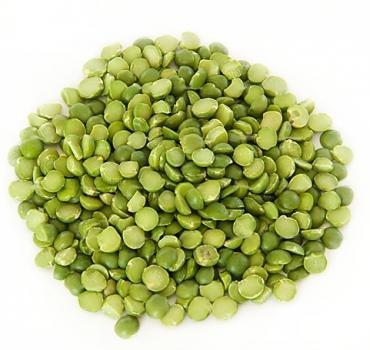
split green pigeon peas
Dals: Split green pigeon peas are a key ingredient in many Indian dals, which are lentil soups or stews. They can be cooked on their own or with other vegetables and spices.
Curries: Split green pigeon peas can also be used in curries. They add a nutty flavor and thickness to curries.
Soups and stews: Split green pigeon peas can be used in soups and stews from all over the world. They are a hearty and nutritious addition to any meal.
Salads: Split green pigeon peas can also be added to salads for a protein and fiber boost.
Here are some of the specifications of split green pigeon peas:
Size: Split green pigeon peas are about the size of a pea.
Color: Split green pigeon peas are yellow or green in color.
Flavor: Split green pigeon peas have a nutty flavor.
Texture: Split green pigeon peas have a slightly firm texture.
Cooking time: Split green pigeon peas typically cook in about 30 minutes.
Split green pigeon peas are a versatile ingredient that can be used in a variety of dishes. They are a good source of protein, fiber, and iron, and they can help to add heartiness and nutrition to any meal.
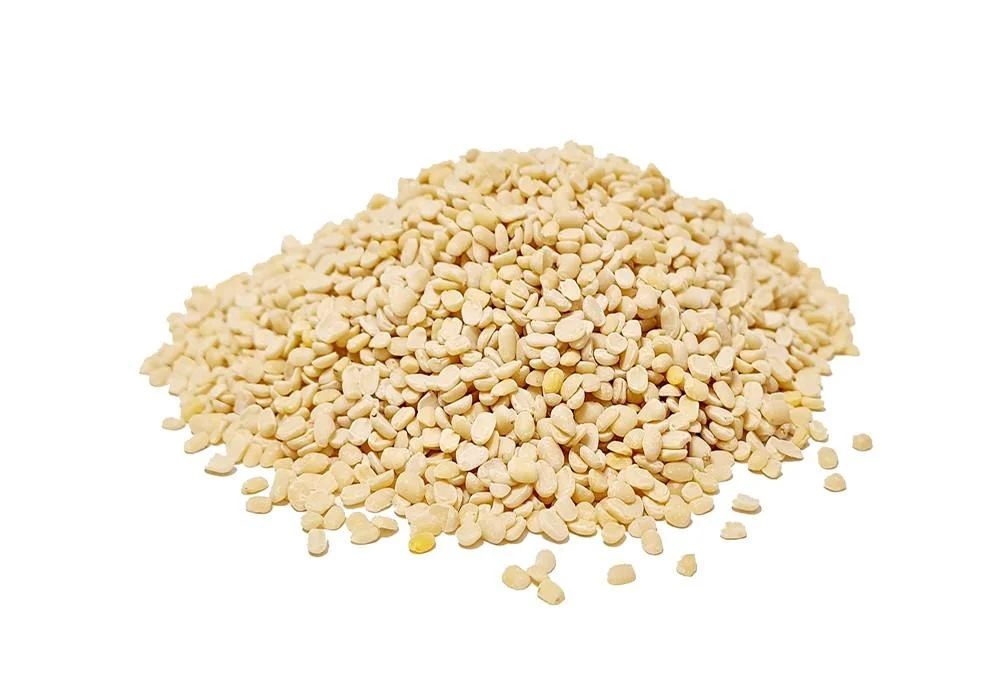
Split & skinned black gram
Split and skinned black gram is a versatile ingredient that can be used in a variety of dishes. Here are some of the most common uses:
Dal: Urad dal is a staple ingredient in Indian cuisine. It is used to make a variety of dals, which are thick stews or soups made with lentils and beans. Urad dal can be cooked on its own or combined with other lentils and vegetables.
Dosa and papadum: Urad dal batter is a key ingredient in dosa and papadum, which are South Indian thin pancakes and crispy flatbreads, respectively. The batter is made by grinding urad dal with water and letting it ferment for several hours.
Vadai: Vadai are savory fritters made from urad dal batter. They are a popular street food in India and can be enjoyed as a snack or appetizer.
Bhilfe: Bhilfe is a Bengali dish made with urad dal and vegetables. It is a light and healthy dish that is perfect for a summer meal.
Pancakes and waffles: Urad dal flour can be used to make gluten-free pancakes and waffles.
Specifications of split and skinned black gram
- Color: Creamy white
- Texture: Smooth
- Flavor: Mildly earthy and slightly sweet
- Shape: Split and skinned black grams are small, oval-shaped beans.
- Size: They are about the size of a split pea.
- Nutritional value: Urad dal is a good source of protein, fiber, iron, calcium, and phosphorus.
Here are some additional things to keep in mind about split and skinned black gram:
Split and skinned black gram is available at most Indian grocery stores.
It can be stored in an airtight container in a cool, dry place for up to six months.
Urad dal needs to be soaked in water before cooking. The soaking time will vary depending on the recipe, but it is typically 30 minutes to 1 hour.
Urad dal can be cooked on the stovetop or in a pressure cooker.
Split and skinned black gram is a versatile and nutritious ingredient that can be used in a variety of dishes.
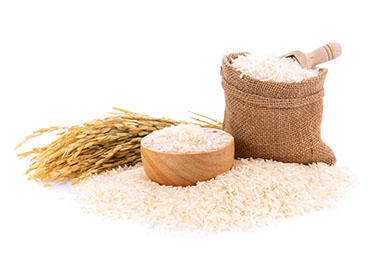
RICE
There are two main ways we can interpret "RICE":
Rice as food: Rice is a staple food for many cultures around the world. It's a good source of carbohydrates, which provide energy for the body. Brown rice is a whole grain and contains more fiber, vitamins, and minerals than white rice. Here are some health benefits of rice:
- May help maintain a healthy weight: Brown rice can keep you feeling fuller for longer due to its fiber and protein content.
- May help regulate digestion: Rice is a good source of fiber, which is important for digestive health.
- Potential benefit for people with diabetes: Brown rice has a lower glycemic index than white rice, meaning it may cause less of a spike in blood sugar levels.
RICE for injury treatment: RICE is an acronym for a first-aid protocol used to treat soft tissue injuries like sprains or strains. Here's what RICE stands for:
- Rest: Avoid putting weight on the injured area.
- Ice: Apply ice packs to the injury to reduce swelling and inflammation.
- Compression: Wrap the injured area with an elastic bandage to reduce swelling.
- Elevation: Elevate the injured area above the heart to help reduce swelling.
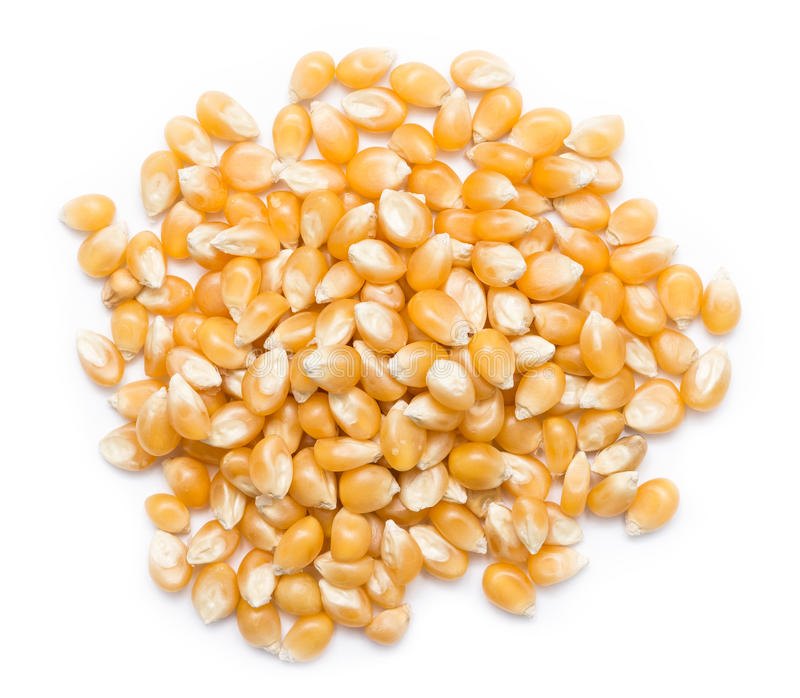
MAIZE
Yellow corn is a good source of the carotenoids lutein and zeaxanthin, which are good for eye health and help prevent the lens damage that leads to cataracts. Corn also has smaller amounts of vitamins B, E, and K, along with minerals like magnesium and potassium. When it comes to nutrients, color matters

